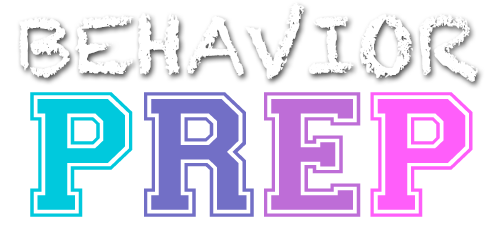B.2 Identify and distinguish between stimulus and stimulus class.
In the field of behavior analysis, stimulus classes are categorized based on different dimensions and types. Let’s define and provide examples for the dimensions of stimulus classes and explore some common types:
Dimensions of Stimulus Classes
Formal Dimension
The formal dimension refers to the physical or sensory characteristics of stimuli. Stimuli within the same formal class share common physical properties, such as shape, size, color, or sound.
Example: A formal stimulus class could include round objects, such as balls, balloons, or cookies, which share the common characteristic of being circular in shape.
Temporal Dimension
The temporal dimension refers to the temporal relationship between stimuli. Stimuli within the same temporal class share a common temporal pattern or occur together in time.
Example: A temporal stimulus class could include the sound of a bell and the sight of a teacher entering the classroom, which consistently occur together as part of the morning routine.
Functional Dimension
The functional dimension refers to the common effect or consequence that stimuli have on behavior. Stimuli within the same functional class produce similar behavioral outcomes or serve the same function.
Example: A functional stimulus class could include different food items that serve as reinforcers for a person. These food items may have different physical properties but share the common function of increasing the likelihood of behavior they follow, such as eating.
Types of Stimulus Classes
Feature Stimulus Class
A feature stimulus class consists of stimuli that share a common physical feature or attribute. These stimuli are grouped together based on a specific characteristic they possess.
Example: A feature stimulus class could include objects that are all red in color. This class might include a red ball, a red block, a red toy car, and a red book. These stimuli are categorized together because they share the common physical feature of being red.
Arbitrary Stimulus Class
An arbitrary stimulus class consists of stimuli that are related based on an arbitrary or learned relationship. The stimuli within this class do not share any inherent physical similarity, but they are functionally related through learned associations.
Example: An arbitrary stimulus class could include words that are all associated with the concept of “food.” This class might include words like “apple,” “pizza,” “hamburger,” and “broccoli.” These stimuli are arbitrarily related because they have been taught or learned as words that represent different types of food.
In a feature stimulus class, the stimuli are grouped based on a shared physical characteristic, such as color, shape, or size. In contrast, an arbitrary stimulus class is formed based on learned associations or relationships between stimuli, irrespective of their physical attributes. Both types of stimulus classes are important in behavior analysis as they can influence how individuals respond to stimuli and how interventions are designed to modify behavior.
